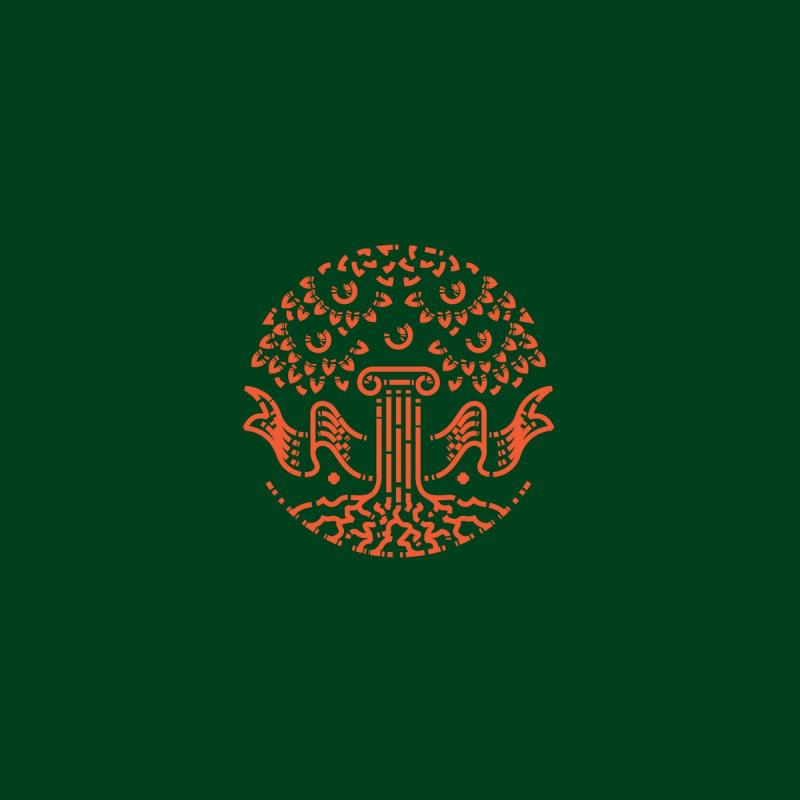Outside the Catholic vicar-general’s house in Geneva, a large mob of priests congealed in the thin sunlight one autumn morning in 1532. Inside, Guillaume Farel, the French Protestant missionary who had stopped in Geneva, was summoned to answer the accusations of ten canons of the cathedral chapter. “Tell us,” said the canons, “have you been baptized, you ugly devil? Why do you travel here and there, unsettling the whole world? . . . Who invited you to preach?” One of the canons drew a sword. An attendant took aim at Farel and pulled the trigger of his gun, a pistol, or an arquebus (reports vary). What happened next was chaos: the weapon exploded in the attendant’s hand, Farel declared that he cowered before no popgun, the mob grew vicious in the street, and the city council expelled Farel and his little entourage of “Lutheran” Reformers.[1] The Frenchman escaped death—barely.
The gears and flywheels of the Reformation’s machinery often turned anything but smoothly. No one knew this more than Farel, who worked to a large extent in a particularly fascinating setting: the world of early religious reform among the French-speaking Swiss. Eventually, he became the leading preacher in Geneva from 1534, remonstrated successfully with a young John Calvin to join the cause in Geneva in 1536, and pastored in Neuchâtel from 1538 until his death in 1565. Someone—perhaps the Strasbourg Reformer Wolfgang Capito—dubbed Farel the “Apostle of the Alps.” For a decade at least, he remained far more influential, with much greater stature in the church, than Calvin. Before any critic of the Reformed hurled the epithet “Calvinist” as a term of abuse, “Farellista” was in common parlance.[2]
Educated in Paris and influenced by the great humanist and Bible reader Jacques Lefèvre d’Étaples, Farel had taught briefly at the Collège du Cardinal Lemoine. Then he joined an illustrious circle of Luther sympathizers in Meaux on the River Marne before clashing briefly with Desiderius Erasmus in Basel. In 1526, the Council of Bern authorized him to teach and preach in French-speaking towns under the canton’s considerable religious and political control. The next year, the Bernese Council added that he not be harmed in his duties.[3] In hindsight, the comment seems unpleasant—a premonition of future dangers in his endeavors as a first-generation Reformer under the cross.
Farel poured inexhaustible energy into his task. Though he traveled with a stamp of approval from the Bernese Council, he experienced remarkable frustration. In fact, the episode at the vicar-general’s house in Geneva in 1532 was typical—one chapter in a harrowing itinerant mission, especially from 1529—structured around Farel’s fiery sermons against idolatry.[4] His conflicts seemed never-ending. When he spent the night in Saint Martin de Vaud in the winter of 1529–30, the Catholic clergy accused him of being a heretic and a devil. The vicar flung a cooking pot at his head.[5] Farel moved on. A few months later, the Bernese Council received information that a priest had assaulted one of Farel’s associates with a knife, and that elsewhere some priests’ concubines had tried to stone Farel.[6] In August 1530, Farel ranged near the town of Valangin, a few miles outside Neuchâtel. Some twenty priests and women tried to force him to kneel before a statue of the Virgin Mary and beg her for absolution. When he refused, the group beat him, leaving him severely bloodied.[7] In February 1531, at the request of the Bernese Council, Farel traveled to Orbe, the birthplace of the eloquent Pierre Viret, whom Farel would soon recruit as a fellow preacher. Farel tried to enter the pulpit in the church, but hostile congregants blocked the path. For everyone’s safety, a bailiff escorted Farel to his room at the inn. Undeterred, he tried again in vain several times to enter the church, berated by clergymen and laymen alike.[8] So, he left the town and passed through Yverdon, where he was again demonized. One of his co-laborers escaped an attempted drowning.[9]
In the spring of 1531, Farel arrived in Grandson, on the southwest tip of Lac de Neuchâtel. He tried to enter the Benedictine monastery to preach. The chaplain of the priory pulled out a knife that he had concealed under his habit and thrust it at Farel, who managed to break free.[10] On June 18, 1531, Farel was refused entry into the church in Payerne, so he preached outside in the adjacent cemetery. Some hundred men gathered in protest, and when Farel would not stop, they threatened to cast him into the River Boye. The assistant bailiff had to sneak him into the prison for protection.[11] After that, the Bernese Council arranged for the statesman Hans Jakob von Wattenwyl, Lord of Columbier, to provide Farel with a security detail. On June 25, 1531, von Wattenwyl personally escorted Farel to the Grandson monastery to attend the service. The Grandson religious, however, anticipated Farel’s arrival and refused to let him in. Von Wattenwyl’s servant pushed aside one of the monks, who revealed a hatchet hidden under his garment. Farel entered the building and interrupted the preacher anyway.[12] For months, Farel and company continued to agitate in Grandson to stop celebration of the Mass.
It seems easy, and natural, to connect “fiery Farel” with the squalid, violent side of the sixteenth century.[13] He left no real theology, after all, and made considerable trouble for himself and others. But this is a one-sided caricature. Farel championed frequent Communion, psalm singing, and catechesis before most of his generation. He was known and esteemed by contemporaries for his homiletic gifts. Calvin’s successor in Geneva, Theodore Beza, commented, “No one could listen to Farel’s fervent prayers without feeling almost as it were carried up to heaven.”[14] Farel even recovered the ancient sursum corda, “lift up your hearts,” and introduced it into Reformed liturgy: “If Christ is in heaven and is to be worshipped there, then the church’s worship must involve more than God coming down to be in the midst of the church; the church must also ascend to the heavens by the power of the Holy Spirit.”[15]
So, how did Farel feel about such violent rejection and repeated assassination attempts—which, after the first or second occasion, might have been at least somewhat predictable and therefore avoidable? Perhaps he himself did not know but merely trudged forward. Still, he left clues in a few striking passages he composed on what seems to have been his favorite subject. “Praying,” wrote Farel, “is an ardent speaking with God from whom man asks and begs that which he has promised; that is, to aid his people, delivering them, forgiving them, saving them. In prayer, man declares God’s power and magnifies his name and reign.”[16] This theme remained central to Farel’s life. In prayer, he had a foot in heaven already, as it were, which displaced and relativized his fears on earth. Convinced of the new understanding of the gospel and confident that God would hear and answer him in any distress, he threw himself into the reform of the church. Prayer reoriented his desires. In the end, Farel did see most of the French-speaking Swiss cities become Protestant, and usually he was at the center of the change. Like the psalmist, Farel made his fundamental appeal to God in Christ: “Will I die without hearing your holy word preached openly?”[17]
2. Pierre Caroli, Refutatio blasphemiae farellistarum in sacrosanctam Trinitatem (Metz, 1545).
3. Biographie nouvelle, 175–76.
4. Frans P. van Stam, “Piety in Tumultuous Times: Farel the Flamboyant Herald of Reformed Belief,” in Between Lay Piety and Academic Theology, ed. Ulrike Hascher-Burger, August den Hollander, and Wim Janse (Leiden: Brill, 2010), 289–307.
5. Herminijard, Correspondance, 2:223.
6. Aktensammlung zur Geschichte der Berner-Reformation, 1521–1532, ed. Rudolf Steck and Gustav Tobler, 2 vols. (Bern: Wyss, 1923), 2:1271, no. 2832.
7. Herminijard, Correspondance, 2:269–70, 275–76; Biographie nouvelle, 242–44.
8. Biographie nouvelle, 250.
9. Aktensammlung, 2:1344, no. 2988.
10. Herminijard, Correspondance, 2:486–87; cf. Herminijard, Correspondance, 2:370–76; 6:413–14.
11. Aktensammlung, 2:1364 (nos. 3029–30).
12. Aktensammlung, 2:1365–69 (nos. 3031–37).
13. See, e.g., Carter Lindberg, The European Reformations, 2nd ed. (Malden, MA: Wiley-Blackwell, 2010), 247.
14. Ioannis Calvinia opera omnia quae supersunt, ed. G. Baum, E. Cunitz, and E. Reuss, 59 vols. (Brunswick: Schwetschke, 1863–1900), 21:132.
15. Theodore Van Raalte, “Apostle of the Alps: Guillaume Farel and the Reforming of Geneva,” in A Companion to the Reformation in Geneva, ed. Jon Balserak (Leiden: Brill, 2021), 72.
16. Guillaume Farel, Sommaire c’est une brieve declaration [ . . . ] (Geneva, 1552), 113.
17. Guillaume Farel, Oraison tresdevote [ . . . ] (Strasbourg, 1542), b7v, quoted in Jason Zuidema and Theodore Van Raalte, Early French Reform: The Theology and Spirituality of Guillaume Farel (Farnham: Ashgate, 2011), 83.







